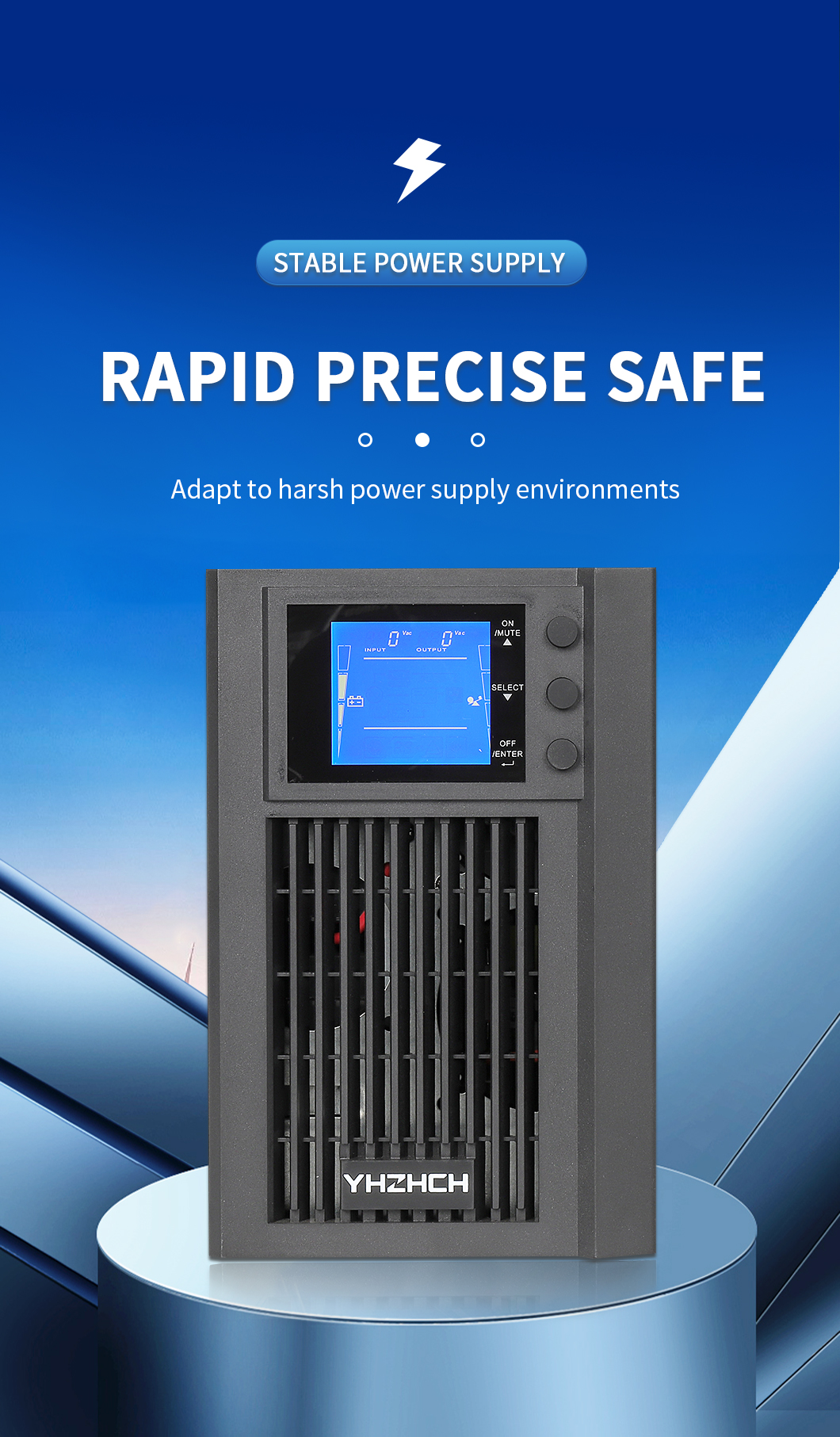The methods for setting charging parameters for UPS power supplies of different brands and models vary, but generally can be done through the following basic steps:
1. * * Refer to the manual * *: Firstly, it is necessary to consult the user manual or technical manual of the UPS power supply. The manual will provide detailed information on the charging parameter setting method, allowed parameter range, and default settings for this model of UPS.
2. * * Enter the settings interface * *: Typically, UPS power supplies are equipped with a control panel that allows access to the settings menu. Usually, the charging parameter setting interface is accessed by pressing a specific key combination or navigating through the menu on the screen. Some high-end UPS systems also support remote settings through network management software, which requires logging into the corresponding management interface.
3. * * Set Charging Voltage * *: In the charging parameter settings interface, find the "Charging Voltage" option. Set the appropriate charging voltage based on the type of battery used (such as lead-acid batteries, lithium batteries, etc.) and the specifications of the battery pack (voltage level, number of series connected batteries, etc.). For example, the common 12V lead-acid battery has a float charge voltage generally set between 13.5V and 13.8V, and an average charge voltage between 14.2V and 14.5V. If it is a lithium battery, the charging voltage setting will vary depending on the chemical system of the lithium battery, generally around 3.6V-4.2V per cell, and needs to be accurately set according to the actual battery specifications.

4. * * Set Charging Current * *: Find the "Charging Current" option to set it. The charging current is usually determined by a certain proportion of the battery capacity. For example, for new lead-acid batteries, the initial charging current may be set to 1/10 to 1/20 of the battery capacity (C/10- C/20) to avoid overcharging causing damage to the battery. If the battery capacity is 100Ah, the charging current can be set between 5A-10A. As the battery charging status changes, the charging current will gradually decrease. For lithium batteries, the charging current setting also needs to follow the recommendations of the battery manufacturer, generally between 0.5C and 1C, where C is the rated capacity of the battery.
5. * * Set Charging Time * *: Some UPS power supplies allow setting charging time limits. The approximate charging time can be estimated based on the battery capacity and charging power, and set according to actual usage. For example, for a large capacity lead-acid battery, the charging time may be set to 8-10 hours to ensure that the battery can be fully charged without being damaged due to prolonged charging.
6. * * Other parameter settings * *: Some UPS power supplies may also provide other charging related parameter settings, such as temperature compensation coefficient. If UPS is equipped with a temperature sensor, it can automatically compensate for the charging voltage based on the ambient temperature to improve charging efficiency and protect the battery. Generally speaking, the setting range of temperature compensation coefficient is between -3mV/℃ and 5mV/℃ per cell, and the specific value needs to be determined according to the battery type and manufacturer's recommendations.
7. * * Save Settings and Confirm * *: After completing all charging parameter settings, follow the prompts on the interface to save the settings. Some UPS systems may require reconfirmation of settings to prevent misoperation. After successful saving, UPS will charge the battery according to the newly set charging parameters.
When setting the charging parameters of UPS power supply, it is necessary to strictly follow the instructions of the battery manufacturer and the technical requirements of UPS power supply to ensure that the battery can be charged safely and efficiently, and to extend the service life of the battery. If you are unsure or have questions about parameter settings, it is recommended to consult the technical support personnel of the UPS manufacturer or professional battery maintenance personnel.


